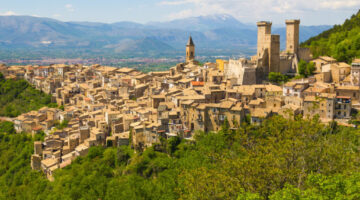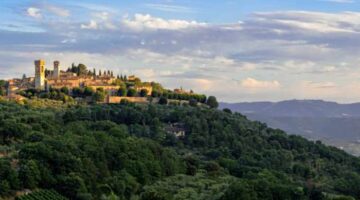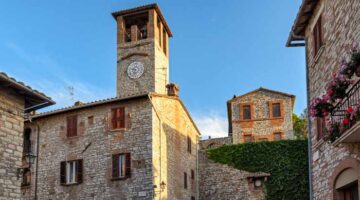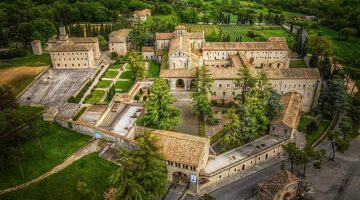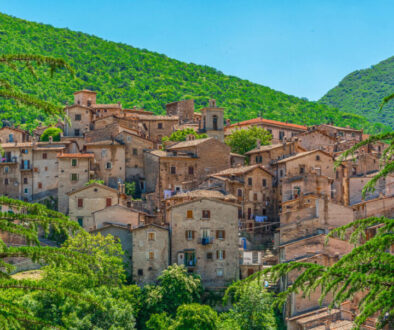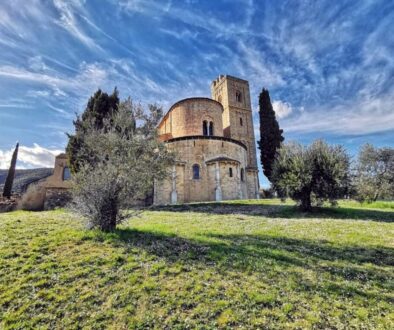The most beautiful village to visit in Umbria where the history intertwined with legend
Small, authentic, far from the hustle and bustle of the city and modernity
They are the Italian villages, pretty rural realities – often unknown – which contain all the genuineness and ancient traditions of our country of which they are the beating heart.
The historic villages in Italy are many and all to be discovered, especially in winter when the weak light of the sun and the surrounding silence give them an even more fascinating and enchanted touch.
Among all the historic villages of Italy, there is one in particular that will amaze you thanks to its typically medieval appearance. This place is located in Umbria, between Perugia and Lake Trasimeno, and is part of the most beautiful villages in Italy.
Let’s talk about Corciano, a little gem protected by its well-preserved walls and to be explored at a slow pace.
Like most of the Umbrian villages, Corciano is also located on a hill about 408 meters above sea level.
Its origins would be linked to a certain Curtius, an owner of a rustic estate from which the inhabited center would have developed. According to popular tradition, however, the name of the village would instead be connected to Ciano Razzeano, son of Giano who founded Perugia.
Finally, for still others, it derives from Coragino, founder of the village and rival of Ulysses, who in turn – according to legend – founded Perugia.
It is said that once Troy was destroyed, Ulysses would have arrived in Italy together with his followers, including Coragino. Disappointments would soon arise between the two which forced Coragino to leave Perugia and move to a nearby hill. Here he would have founded Corciano.
In reality this legend would refer to a real situation that occurred during the fourteenth century concerning the discordant relationships between the nobility and the bourgeoisie.
In the legend the nobles would be represented by Coragino, who would have rebelled against the bourgeoisie. The latter, represented by Ulysses, had the sole and exclusive objective of enriching the city economy to the detriment of the countryside.
Legends aside, what is certain is that today Corciano is one of the most evocative medieval villages in all of Umbria, a place not to be missed if you are looking for authenticity and peace.
Corciano and its wonders
Visiting Corciano means entering alleys, ups and downs, and stone houses totally immersed in silence. The boundary walls are interrupted only by the two gateways to the village, Porta Santa Maria and Porta San Francesco.
A small church is also dedicated to the latter: according to the stories, in fact, the Saint would have stopped here on his return from Isola Maggiore where he had spent the period of Lent.
In addition to that of San Francesco, however, there are also other churches that deserve a minute of your time. Among these, Santa Maria Assunta with its wonderful bell tower, where Perugino’s “L’Assunta” is kept; St. Christopher; Sant’Agostino and Santa Maria del Serraglio.
Walking through the alleys of the center you will also come across the historic buildings of the village and the main square of the town, Piazza Coragino, where there is the well-known 16th century well complete with the municipal coat of arms.
In Corciano there are also several museums, all living witnesses of the important past of the village.
Inside the Church of San Cristoforo, for example, there is the museum of the Casa Contadina and that of Sacred Art; the Church of San Cristoforo, on the other hand, houses the Pievania Museum where some finds from the religious life of the local community are collected.
Finally, other museums such as the Antiquarium are located outside the walls. This in particular houses prehistoric and paleontological finds as well as spaces dedicated to the Etruscan and Roman era.
Not only history and culture: nature in Corciano
Corciano also hides a not indifferent naturalistic aspect. Immediately outside the entrance doors of the walls you will in fact find the fascinating Sentiero dei mandorli, a circular path that winds along the walls of the village.
